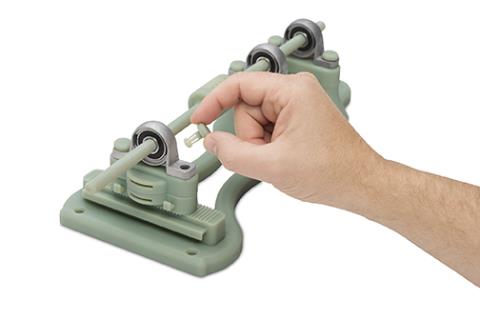Prototype with Extra Versatility
Latest News
August 21, 2017

While corresponding with my contact at Fisher Unitech, it hit me that honking geese like me often leave the impression that 3D printing is about making end-use parts with rapid prototyping a side benefit. Rapid prototyping has always been a key benefit of additive manufacturing technology. Today’s Check it Out offering explains why.
“Connex3: The Versatility Standard in 3D Printing” takes a gander at what Stratasys’ Connex3 series of additive manufacturing systems bring to rapid product design and development. The Hulu blurb is that this paper asserts a Connex3 can change your understanding of rapid prototyping and your product development process dramatically.
From beginning to end, this paper explains the characteristics of these systems with an eye toward how they can speed up and enhance product development cost-effectively. It provides a rundown of the capabilities of Connex3 systems, how they uniquely address rapid product design and, tacitly, why you should give them serious consideration.
 A Connex3 3D printer can make parts and assemblies that give users the ability to evaluate form, fit and functional performance. This flexible motor shaft coupler shows how an assembly 3D printed in Digital ABS Plus is durable enough to allow end movement without breaking. Stratasys image courtesy of Fisher Unitech.
A Connex3 3D printer can make parts and assemblies that give users the ability to evaluate form, fit and functional performance. This flexible motor shaft coupler shows how an assembly 3D printed in Digital ABS Plus is durable enough to allow end movement without breaking. Stratasys image courtesy of Fisher Unitech.The paper begins with a basic system overview. Connex3 can 3D print durable, fully functional prototype parts and assemblies in multiple materials and colors. Parts emerge smooth and don’t require any notable post-processing. But your prototypes can replicate final products beyond just appearance. They can snap together, spin, handle a beating and so forth.
Three quick case studies follow. The first looks at how an ophthalmological device manufacturer uses its Connex3 to optimize its rapid prototyping processes and accelerate clinical validation. Next is a nice one about engineering students using a Connex3 to learn design and help local businesses make better products. Last is how an industrial control solutions manufacturer uses its Connex3 to prototype overmolded designs cost-effectively and quickly.
Wrapping it up are lengthier discussions on colors and materials. Material options include rigid, rubber-like and transparent. You can even create composite materials with these systems. Multiple materials means you can have up to 82 material characteristics in a part or assembly.
Colors: Your options include five base colors and blended color palettes for hundreds of options. This eliminates hand-painting. It’s neater, too. Finally, there are some tips and tricks to get you thinking about how a Connex3 could benefit your rapid prototyping process.
Well illustrated and sprinkled with specs, “Connex3: The Versatility Standard in 3D Printing” is interesting stuff. If you believe you can make your rapid prototyping process more than it is, hit today’s Check it Out link and learn how.
Thanks, Pal. – Lockwood
Anthony J. Lockwood
Editor at Large, DE
Subscribe to our FREE magazine, FREE email newsletters or both!
Latest News
About the Author
Anthony J. Lockwood is Digital Engineering’s founding editor. He is now retired. Contact him via [email protected].
Follow DE






